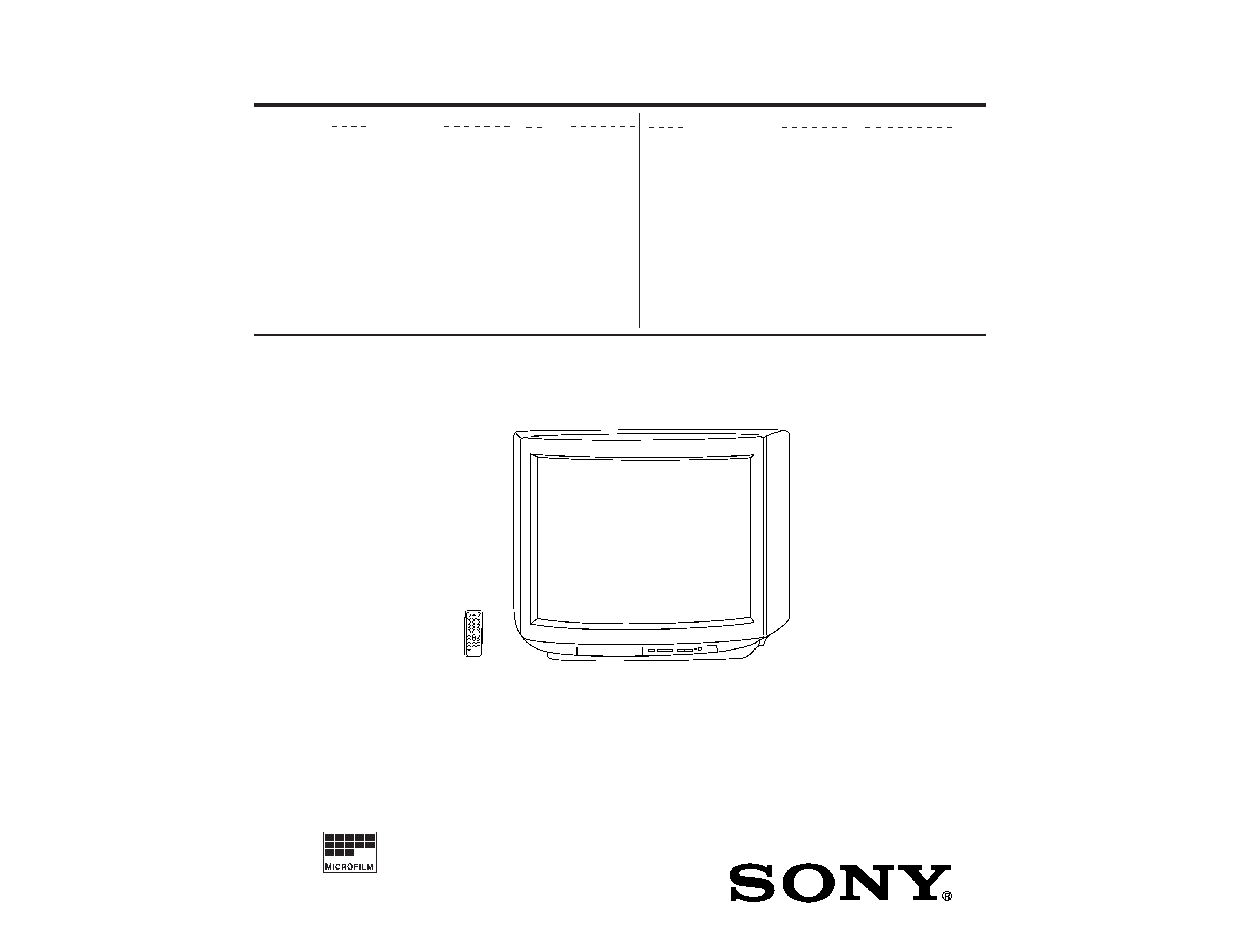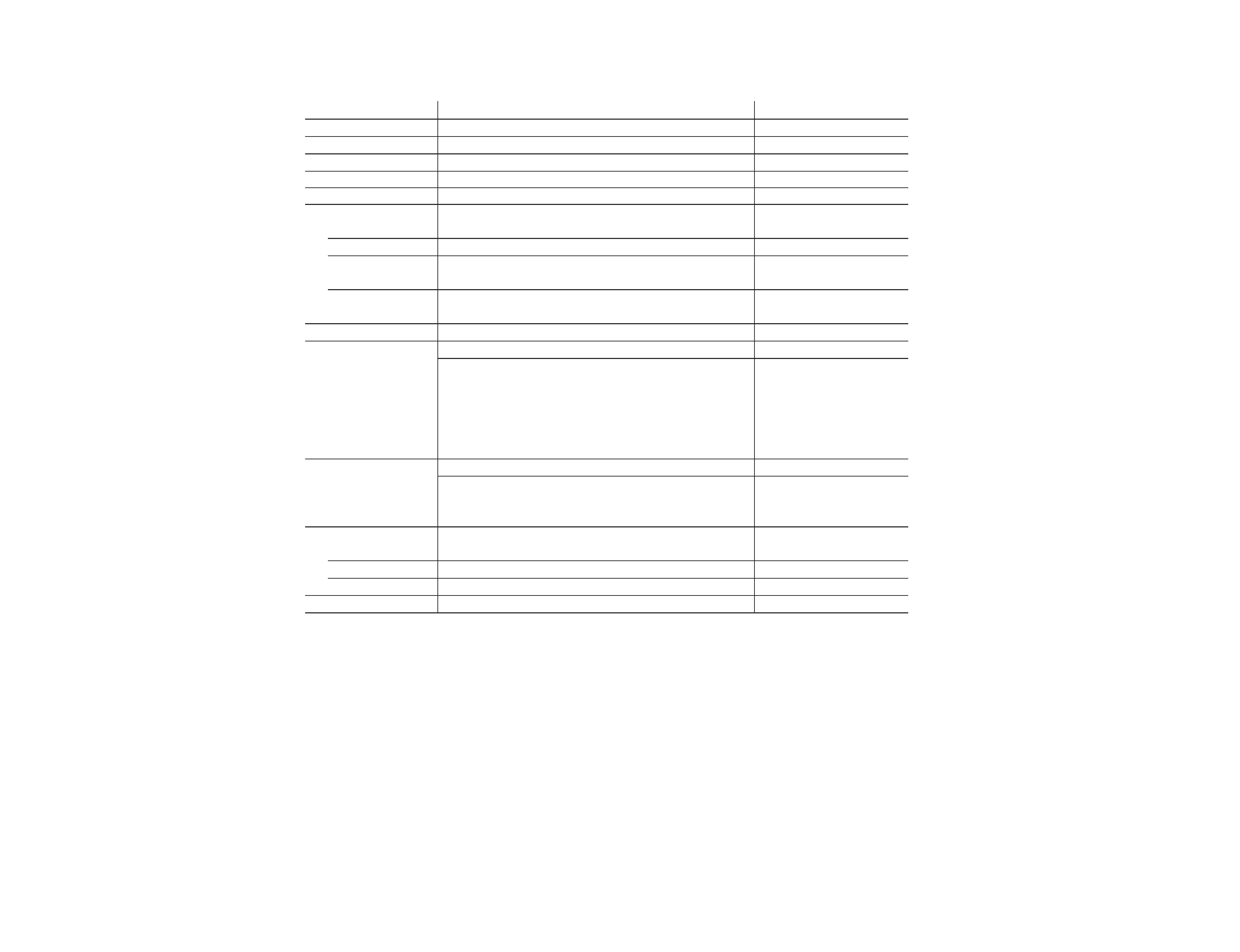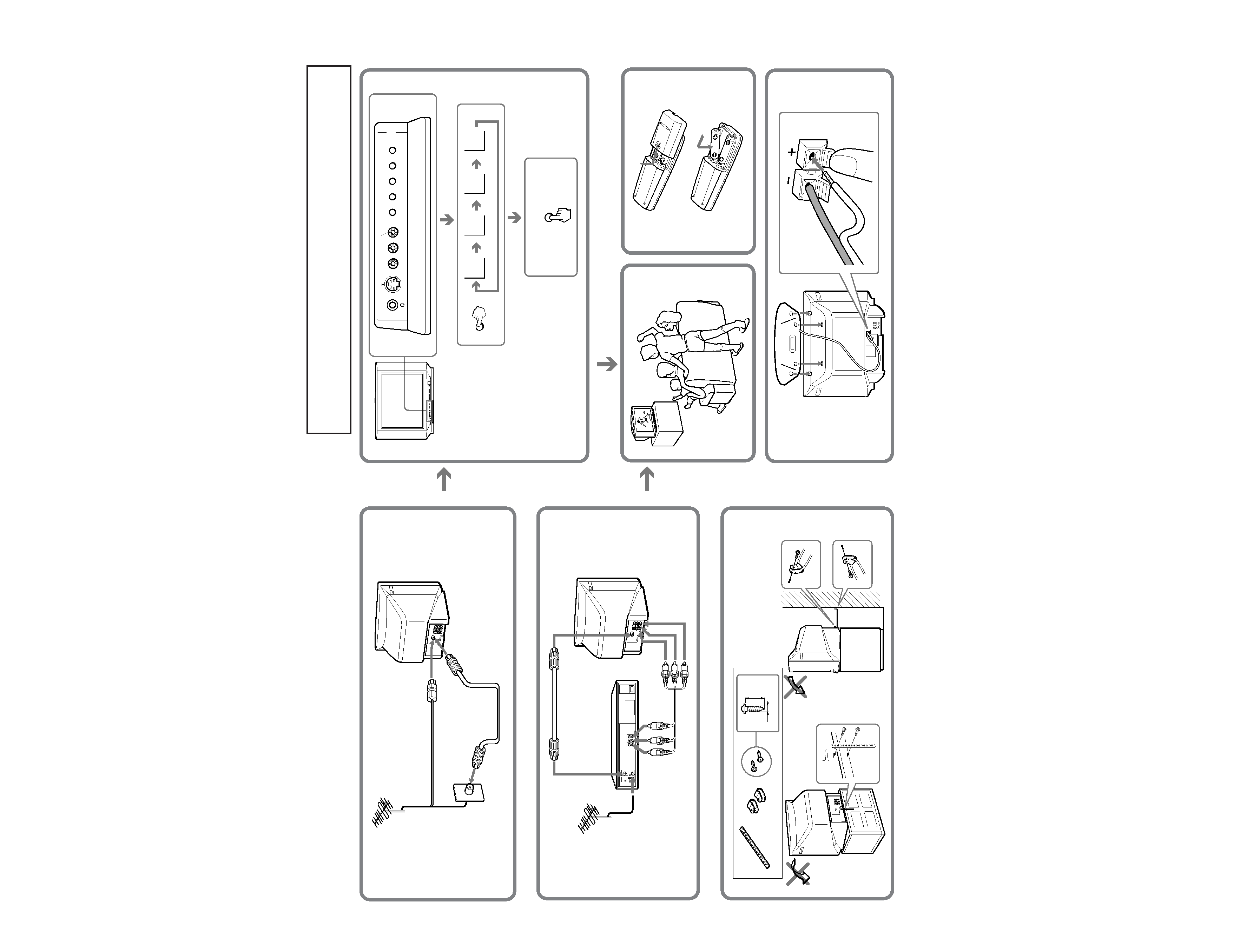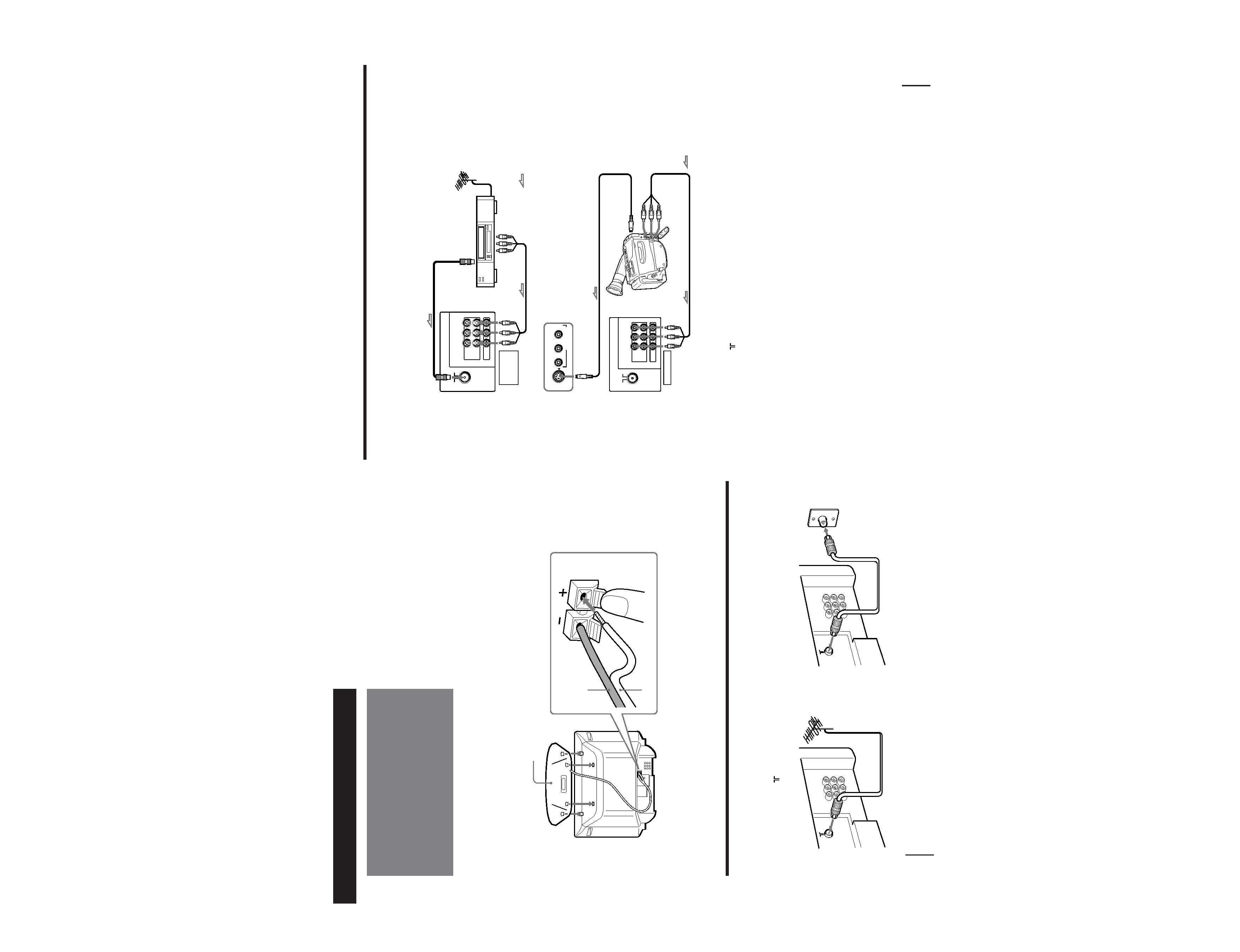
MODEL
COMMANDER DEST.
CHASSIS NO.
KV-J29MN1AK RM-883 India
SCC-K67P-A
SERVICE MANUAL
MODEL
COMMANDER DEST. CHASSIS NO.
TRINITRON ® COLOR TV
BG-1S (D)
<REFINE>
CHASSIS

2
KV-J29MN1AK
RM-883
SPECIFICATIONS
CAUTION
SHORT CIRCUIT THE ANODE OF THE PICTURE TUBE AND
THE ANODE CAP TO THE METAL CHASSIS, CRT SHIELD, OR
CARBON PAINTED ON THE CRT, AFTER REMOVING THE
ANODE.
SAFETY-RELATED COMPONENT WARNING!!
COMPONENTS IDENTIFIED BY SHADING AND MARK
! ON
THE SCHEMATIC DIAGRAMS, EXPLODED VIEWS AND IN THE
PARTS LIST ARE CRITICAL TO SAFE OPERATION. REPLACE
THESE COMPONENTS WITH SONY PARTS WHOSE PART
NUMBERS APPEAR AS SHOWN IN THIS MANUAL OR IN SUP-
PLEMENTS PUBLISHED BY SONY.
Note
Power requirements
110-240 V AC, 50/60 Hz
Power consumption (W) Indicated on the rear of the TV
Television system
B/G, I, D/K, M
Color system
PAL, PAL 60, SECAM, NTSC4.43, NTSC3.58
Stereo system
NICAM Stereo B/G, I; A2 Stereo (German) B/G
Channel coverage
B/G
VHF: E2 to E12/UHF: E21 to E69/CATV: S01 to S03, S1 to S41
I
UHF: B21 to B68/CATV: S01 to S03, S1 to S41
D/K
VHF: C1 to C12, R1 to R12/UHF: C13 to C57, R21 to R60/
CATV: S01 to S03, S1 to S41, Z1 to Z39
M
VHF: A2 to A13/UHF: A14 to A79/
CATV: A-8 to A-2, A to W+ 4, W+ 6 to W+ 84
Audio output (speaker)
5W
+ 5W + 15W (SUPER WOOFER)
Inputs
Antenna: 75 ohms external terminal
VIDEO input jacks: phono jacks
Video: 1 Vp-p, 75 ohms
Audio: 500 mVrms, high impedance
S Video jack:
Y: 1 Vp-p, 75 ohms, unbalanced, sync negative
C: 0.286 Vp-p, 75 ohms
Outputs
Headphone jack: minijack
MONITOR OUT jacks: phono jacks
Video: 1 Vp-p, 75 ohms
Audio: 500 mVrms
Picture tube
29 in.
Tube size (cm)
72
Measured diagonally
Screen size (cm)
68
Measured diagonally
Dimensions (w/h/d, mm) 780
× 601 × 542
Mass (kg)
46
Design and specifications are subject to change without notice.

3
KV-J29MN1AK
RM-883
TABLE OF CONTENTS
1. GENERAL ....................................................................
4
2. DISASSEMBLY
2-1.
3D Speaker Removal ...........................................
11
2-2.
Rear Cover Removal ............................................
11
2-3.
Speaker Removal .................................................
11
2-4.
Chassis Assy Removal .........................................
11
2-5.
Service Position ...................................................
11
2-6.
A3, A4, A11 and A12 Boards Removal ..............
12
2-7.
K1 Board Removal ..............................................
12
2-8.
K Board Removal ................................................
12
2-9.
F1 and H3 Boards Removal .................................
13
2-10. A and F2 Boards Removal ...................................
13
2-11. Picture Tube Removal ..........................................
13
3. SET-UP ADJUSTMENTS
3-1.
Beam Landing ......................................................
15
3-2.
Convergence .........................................................
16
3-3.
Focus Adjustment ................................................
18
3-4.
G2 (Screen) and White Balance Adjustments .....
18
4. SELF DIAGNOSIS FUNCTION ............................
19
5. CIRCUIT ADJUSTMENTS
5-1.
Adjustments with Commander ............................
20
5-2.
Adjustment Method .............................................
21
5-3.
A Board Adjustment after IC003 (Memory)
Replacement .........................................................
25
5-4.
Picture Distortion Adjustment .............................
25
6. DIAGRAMS
6-1.
Block Diagram ......................................................
27
6-2.
Circuit Boards Location .......................................
31
6-3.
Schematic Diagrams and Printed Wiring Boards .
31
(1)
Schematic Diagram of A Board ............................
35
(2)
Schematic Diagrams of A4, F1, H3, K1 and
VM Boards ............................................................
39
(3)
Schematic Diagrams of A3, A11 and K Boards ...
47
(3)
Schematic Diagrams of A12, C and F2 Boards ...
51
6-4.
Semiconductors .....................................................
57
7. EXPLODED VIEWS
7-1.
Picture Tube ..........................................................
60
7-2.
Chassis ..................................................................
61
7-3.
3D Speaker ............................................................
62
8. ELECTRICAL PARTS LIST ....................................
63
Section
Title
Page
Section
Title
Page

4
KV
-J29MN1AK
RM-883
SECTION 1
GENERAL
The operating instructions mentioned here are partial abstracts from the
Operating Instructions Manual. The page numbers of the Operating
Instruction Manual remain as in this manual.
2
3.8 mm
20 mm
3
2
1
COLOR
SYSTEM
TV
SYSTEM
MANUAL
PROGR
AUTO
PROGR
SELECT
VIDEO
S VIDEO
(MONO)
LAUDIOR
VIDEO 1
INPUT
TV
SYSTEM
B/G
I
D/K
M
AUTO
PROGR

5
KV
-J29MN1AK
RM-883
Getting Started
5
VIDEO
L (MONO)
AUDIO
R
VIDEO
IN
MONITOR
OUT
2
1
Connecting optional equipment
You can connect optional audio/video equipment to your TV such as a VCR, multi disc player, camcorder, video
game, or stereo system.
Connecting video equipment using video input jacks
to antenna socket
VIDEO IN 1
or
VIDEO IN 2
Rear of TV
: Signal flow
to antenna
output
VCR
to video
and audio
outputs
L
VIDEO
S VIDEO
(MONO)
VIDEO IN 1
R
AUDIO
VIDEO
L (MONO)
AUDIO
R
1
2
VIDEO
IN
MONITOR
OUT
to S video
outputs
Camcorder
to video and
audio outputs
VIDEO IN 2
Front of TV
Rear of TV
: Signal flow
When connecting a monaural VCR
Connect the yellow plug to VIDEO and the black plug to AUDIO-L (MONO).
When connecting a VCR to the
(antenna) terminal
Preset the signal output from the VCR to the program position 0.
When using the video input jacks
Do not connect video equipment to the video input jacks at the front and the rear (VIDEO IN 1) of your TV simultaneously; otherwise the
picture will not be displayed properly on the screen.
If both S Video and video signals are input simultaneously
The S Video signal is selected and "S VIDEO" appears on the screen.
To view a video input signal, disconnect the S Video connection and "VIDEO 2" appears on the screen.
If S Video and video signals are input separately
"S VIDEO" and "VIDEO 2" appears on the screen respectively.
Note on the video input
When no signal is input, the screen becomes blue.
Getting Started
4
Connections
Getting Started
Connecting the SUPER WOOFER
1 Attach the SUPER WOOFER into the footholds on the top of the TV.
2 Connect the wires to the SUPER WOOFER (8) terminals at the rear of the TV.
The red wire should be connected to the ` red terminal and the black wire to the ' black terminal.
Notes
· Connect only the supplied SUPER WOOFER; otherwise the TV may malfunction.
· Unplug the TV from the wall outlet when connecting the SUPER WOOFER.
· To prevent a malfunction caused by a short circuit of the terminals, make sure that none of the SUPER WOOFER wire strands stick out,
making contact with the neighbouring speaker terminal.
Connecting a VHF antenna or a combination VHF/UHF antenna
-- 75-ohm coaxial cable (round)
Attach an optional IEC antenna connector to the 75-ohm coaxial cable.
Plug the connector into the
(antenna) socket at the rear of the TV.
Red wire
Black wire
SUPER WOOFER
1
2
Rear of TV
Rear of TV
or
On a wall
